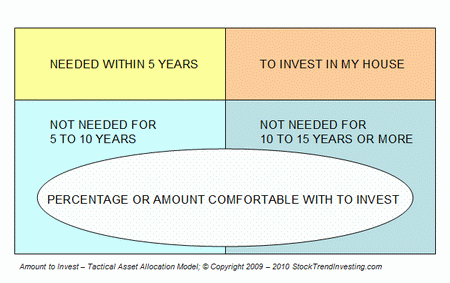Two Types of Risk and the Allocation of your Savings over Different Assets
Investing means taking risks. High returns without risks are impossible. The potential higher return is the reward for taking the higher risk.
There are two different types of risk:

a) The risk that you never get your money back. You invest for example in Enron bonds, you have bought GM stock or you put your money on a savings account from a shaky bank that went bankrupt and that is not covered by some kind of national guarantee. In all cases, you do not get your money back (or very, very little). This is not a “return on investment” issue but the “return of investment” risk.
If you have money, you always have the risk of losing it. Keeping it at home in an old sock is not 100% save either. My approach is always that a little higher potential “return on investment” is not worth increasing the “return of investment” risk. Or in other words, my first priority when choosing assets to invest in is to be reasonable safe and to avoid putting my money into situations where there is a substantial risk to lose it all.
b) The second type of risk is the risk of value fluctuations in time. The value of the investments can go up and down. In general, this risk can be mitigated if your investment time horizon is long enough or is flexible enough to make it long enough. Once you can wait, you can get your initial investment back. That does not mean that it was a good investment since there are also things like inflation and better opportunities to put your money in.
However, when you want higher returns you need to take risks. So we cannot avoid all risks when we want higher returns than what we would get when we only put our money on a savings account. The question then is how to mitigate the risks.
Asset Allocation to Mitigate Risk
In summary, my approach towards making decisions how to allocate my savings over different assets includes the following:
- I allocate a part of my saving to owning real real-estate, but will avoid buying a place during the middle or final stages of a housing bubble. The percentage of your savings to use for the house where you live is an individual choice for each person. For wealthier people this percentage will probably be smaller.
- My approach to this is that the ongoing mortgage/rent and other costs must be easily paid out of the current and visible near-future income. I prefer to invest as little as possible of my savings into the place where I live to stay more liquid and keep my savings available for other investments.
- I do not need any of the money that I invest in the stock market for the next 5 years. And I make sure that 50% of the money that I invest in the stock market is not need by me for the next 10 to 15 years. This is just the safety net that can give me the chance to earn my money back in case my other ways to mitigate the risks do not work for once.
- I invest in stock market index funds and I avoid investment exposure to countries and companies that seem to have problems.
See our risk-free offer for our eBook on how you can make decisions regarding the allocation of your savings over different asset classes.
Next & Previous Blog Post
- ‹ previous
- 40 of 174
- next ›


